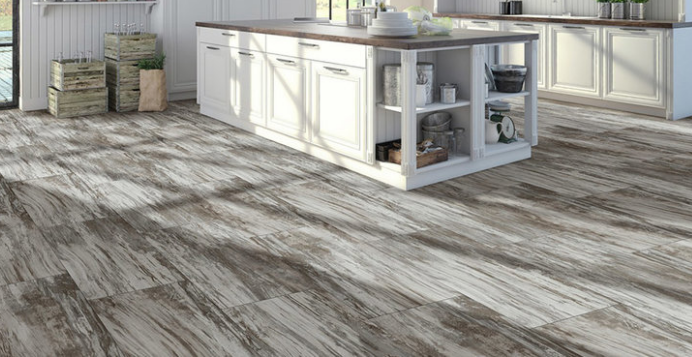Flooring is a fundamental aspect of any space, be it a residential, commercial, or industrial building. There are many different types of flooring available for building construction.
We do all our activities on Floor. So, flooring not only enhances the aesthetics but also contributes to the overall functionality and comfort of a room.
With a wide array of options available, selecting the right flooring material can be overwhelming. Here, we will explore and analyze various types of flooring, their characteristics, and their suitability for different environments.
Hardwood Flooring
This is renowned for its timeless beauty, durability, and natural appeal. It is crafted from solid wood or engineered wood, offering a vast range of species, colors, and finishes. Hardwood floors lend elegance to any space, from traditional to contemporary. They are relatively easy to clean and maintain, but they may be susceptible to scratches and water damage.
Laminate Flooring
This flooring mimics the appearance of hardwood, tile, or stone, but at a more affordable cost. Composed of multiple layers, including a High-Density Fiberboard (HDF) core and a photographic layer, laminate flooring is highly durable, resistant to scratches, and easy to clean. It is a popular choice for high-traffic areas due to its exceptional wear resistance. However, it may not withstand excessive moisture or water exposure.
Read Also – Different Types Of Paints Used In Building Construction
Vinyl Flooring
This flooring has gained immense popularity due to its versatility, affordability, and resilience. It is available in a wide range of colors, patterns, and textures, often closely resembling natural materials like wood or stone. Vinyl floors are highly durable, water-resistant, and easy to maintain, making them suitable for kitchens, bathrooms, and other moisture-prone areas. They also provide excellent noise insulation and underfoot comfort.
Ceramic and Porcelain Tile Flooring
Tile flooring, specifically ceramic and porcelain, offers a broad spectrum of design possibilities. These tiles are made from natural clay materials, and then fired at high temperatures. Ceramic tiles are ideal for indoor applications, while porcelain tiles are highly durable and suitable for both indoor and outdoor use. They are resistant to moisture, stains, and scratches. Tile floors are relatively cold and hard, but they can be enhanced with radiant heating systems for added comfort.
Carpet Flooring
This type of flooring provides warmth, comfort, and sound insulation, making it a popular choice for bedrooms and living rooms. Carpet flooring is available in various materials, such as nylon, polyester, wool, or a blend. Carpets come in different styles, patterns, and textures, allowing for customization. However, they require regular maintenance to keep them clean and free from allergens.
Read Also – Purposes And Types Of Skirting In Building Construction
Natural Stone Flooring
These types of flooring include options like marble, granite, limestone, and slate, exudes luxury and elegance. Each stone type possesses distinct characteristics, such as durability, veining patterns, and color variations. Stone floors are highly durable and can withstand heavy traffic. However, they can be cold underfoot and may require regular sealing to maintain their appearance and prevent staining.
Concrete Flooring
This type of flooring, once associated mainly with industrial spaces, has made its way into contemporary residential and commercial designs. It offers durability, low maintenance, and a modern aesthetic. Concrete floors can be stained, polished, or stamped to achieve various looks. They are suitable for areas with high foot traffic, and with proper sealing, they can resist stains and moisture.
Conclusion: Selecting the right flooring for a space involves considering factors such as durability, aesthetics, maintenance, and budget. Each type of flooring offers unique characteristics and benefits, catering to different requirements and design preferences.
Read Also- What Is RCC? Properties And Uses Of RCC
Causes, Effects, and Remedies of Dampness in Building
Different Types of Windows – Building Construction
Types of Stone Masonry Construction – Civil Engineering
Purposes and Types of Skirting in Building Construction
